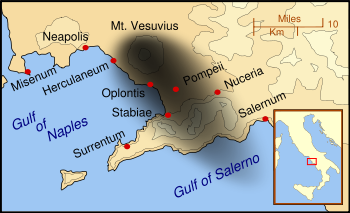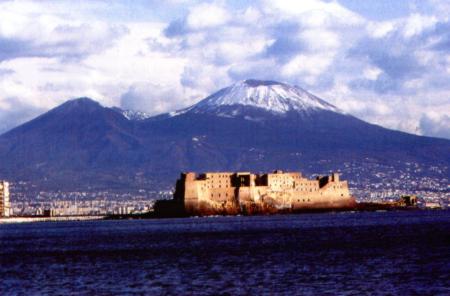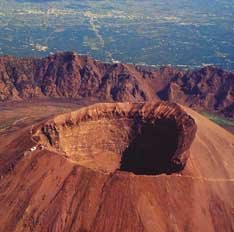Citations
http://upload.wikimedia.org/wikipedia/commons/thumb/b/b8/Mt_Vesuvius_79_AD_eruption_3.svg/652px-Mt_Vesuvius_79_AD_eruption_3.svg.png
http://dsc.discovery.com/convergence/pompeii/pompeii.html
http://volcano.und.edu/vwdocs/volc_images/img_vesuvius.html
http://www.mnsu.edu/emuseum/archaeology/sites/europe/pompeii.html
http://www.vesuvioinrete.it/e_index.htm
http://www3.nationalgeographic.com/places/gallery/italy_mt-vesuvius-victim.html\
http://www.italytraveller.com/en/c/the-vesuvius-national-park
http://www.cotf.edu/ete/modules/volcanoes/vmtvesuvius.html
http://en.wikipedia.org/wiki/Vesuvius
^^a big thanks to all of you!!!!!!!!!!!^^☺
Friday, May 23, 2008
Monday, May 5, 2008
Making a Mount Vesuvius Model
We also made a volcano model of Mt. Vesuvius out of Paper Mache. We used 1 square of cardboard 1 plastic bottle, masking tape, old newspaper, a big bowl, flour, water, paint, vinegar, baking soda, and red, yellow, and orange food dye.
-We first put the bottle in the center of the cardboard
-Then we made sure the bottle was securely taped to the cardboard
-We then made the paper mache by mixing flour and water, we cut the newspaper into strips and dipped it into the mix. We made sure there was no extra excess by running the strips between our fingers.
-We had one end of the newspaper strip at the top of the bottle, and the other at the edge of the cardboard
-It dryed over night
-Once it was dry, it was time to paint it
To make it erupt you have to pour vinegar into the bottle then put in food dye, then fina;y a few drops of baking soda...we haven't tried it yet because we are going to try it out in front of our science class...hope everything works!
-We first put the bottle in the center of the cardboard
-Then we made sure the bottle was securely taped to the cardboard
-We then made the paper mache by mixing flour and water, we cut the newspaper into strips and dipped it into the mix. We made sure there was no extra excess by running the strips between our fingers.
-We had one end of the newspaper strip at the top of the bottle, and the other at the edge of the cardboard
-It dryed over night
-Once it was dry, it was time to paint it
To make it erupt you have to pour vinegar into the bottle then put in food dye, then fina;y a few drops of baking soda...we haven't tried it yet because we are going to try it out in front of our science class...hope everything works!
Friday, May 2, 2008
Mount Vesuvius Today
Now, Mount Vesuvius is a national park. It was officially declared a park on June 5th, 1995, to protect it because it is the only active volcano on the mainland of Europe. The summit is open to visitors, and there are some paths around the mountain. You can drive partway up the volcano, but after a certain point you can only walk. As well as the national park, there is an outdoor museum of the ruins of Pompeii. Scroll down and you can see a picture of a part of the outdoor museum. Over 2,000,000 people still live in the shadows of Vesuvius, in Italy. They are at risk and in danger, for scientists believe the next eruption of Vesuvius is around the corner. Scientists guess the one reason they still live there is becauseof the rich, fertile, soil that Vesuvius provides.
Eruption of 79 A.D.
In 1748 scientists discovered a city that lay buried for almost 1,700 years! This city was called Pompeii. It was destroyed in only 19 hours by Mt. Vesuvius's most famous eruption in 79 A.D. Pompeii was covered in 9 feet of volcanic ash. This city is so popular because the ash and pumice kept the city well preserved. So this is like a window to the past for scientists. Mt. Vesuvius took the lives of 20,000 people living in Pompeii. Pompeii's sister country was also ruined.
Fun Facts
Facts
-Height- 1277 meters (4190 feet)
-Base - 48 kilometers (30 miles)
-Location - Southern Italy near Naples
-Age - 17,000 years old
-Eruptions - Over 50 (Most Famous in 79 A.D.)
-Only active volcano on the Euorpean mainland
-Oven 2,000,000 people live in the shadows of Mt. Vesuvius and could be in danger, scientists don't know the next time Vesuvius will erupt
A big THANKS to http://www.angelfire.com/mi/penny101/info.html for the information
^that article written by Mike Buczek
-Height- 1277 meters (4190 feet)
-Base - 48 kilometers (30 miles)
-Location - Southern Italy near Naples
-Age - 17,000 years old
-Eruptions - Over 50 (Most Famous in 79 A.D.)
-Only active volcano on the Euorpean mainland
-Oven 2,000,000 people live in the shadows of Mt. Vesuvius and could be in danger, scientists don't know the next time Vesuvius will erupt
A big THANKS to http://www.angelfire.com/mi/penny101/info.html for the information
^that article written by Mike Buczek
Friday, April 18, 2008
Basic Mt. Vesuvius info
Mt Vesuvius is an active volcano just east of Naples, Italy. Mount Vesuvius is considered one of the most dangerous volcanoes in the world because of the 3,000,000 people living near it, and because it tends to have explosive eruptions. Although Vesuvius has erupted many times, it is best known for its eruption in 79 AD, when it destroyed the city of Pompeii. When Mt. Vesuvius erupted in killed all the people in Pompeii and also the people in its "sister country", Herculaneum. Its explosion was so strong, it didn't burn the people, into just ashes, it actually made a cast of ash aroung the person and sort of "mummified" the body. Most bodies are still aroung and you can tell what they are...inside of the "ash cast" the people suffered immediatley and died. This kind of volcan ois called a stratovolcano, or composite. It's tall, and composed of many layers of hardened lava, tephra, and volcanic ash. These kinds of volcanoes have a steep profile and periodic EXPLOSIONS, not just bubbling ove the sides/rim of the volcano, it is actually like an explosion. The magam that comes out of this kind of volcano cools and hardens without going very far. Now check some of our other blogs about Mt. Vesuvius!
Subscribe to:
Posts (Atom)








